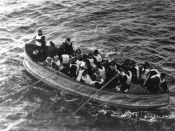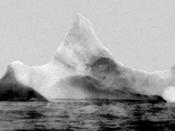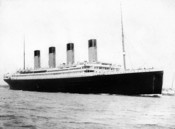(The Titanic)
Ignoring the time zone difference, it was 90 years ago that the RMS Titanic, on her maiden voyage in 1912, struck an iceberg. The collision was not head-on. The berg bumped and ground along the starboard side and then was gone into the calm, moonless night. At first, few thought the damage serious. It was difficult to coax passengers into the lifeboats. Yet three hours later, the Titanic slammed into the ocean floor almost 4000 metres below, torn in two. Over 1500 of her passengers and crew were dead. And the design and operation of sea vessels changed dramatically and permanently.
Most of the discussion of the accident revolves around specific problems. There was the lack of sufficient lifeboats (enough for at most 1200 on a ship carrying 2200). There was the steaming ahead at full-speed despite various warnings about the ice-field. There was the lack of binoculars for the lookout.
There were the poor procedures with the new invention, the wireless (not all warnings sent to the ship reached the bridge, and a nearby ship, the operator abed, missed Titanic's SOS). Very recently, from recovered wreckage, "Popular Science" claimed the hull was particularly brittle even for the metallurgy of the time. (A claim now debunked.) Each has at one time or another been put forward as "THE reason the Titanic sank".
What gets far less comment is that most of the problems all came from a larger, systemic problem: the owners and operators of steamships had for five decades taken larger and larger risks to save money - risks to which they had methodically blinded themselves. The Titanic disaster suddenly ripped away the blindfolds and changed dozens of attitudes, practices, and standards almost literally overnight.
The perception persists that the Titanic was, if obviously not "unsinkable"...


